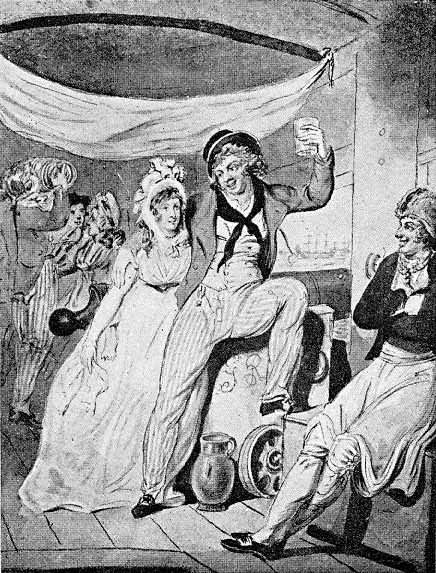we trace its ancestry back to the days of gruesome hard labour and lonely sailors.



Basic definition:
tarp |tärp|
noun informal
a tarpaulin sheet or cover.
ORIGIN early 20th cent.: abbreviation,
tarpaulin |tärˈpôlən; ˈtärpə-|
noun
1 heavy-duty waterproof cloth, originally of tarred canvas.
• a sheet or covering of this.
2 historical a sailor's tarred or oilskin hat.
• archaic a sailor.
ORIGIN early 17th cent.: probably from tar 1 + pall 1 + -ing 1


From Wikipedia:
The word tarpaulin originated as a compound of the words tar and palling, referring to a tarred canvas pall used to cover objects on ships. By association, according to one theory, sailors became known as tarpaulins and eventually tars
Example of tarred/oil skinned sailor hats.
Illustration of old sailor with tarp hanging in background.
[1]
When used for a tarp, the word hoochie (also hootchie, hootch, or hooch) comes from the Japanese uchi ("house"). Huts in various parts of rural Asia are known by this or similar names, and during the Korean and Vietnam Wars English-speaking soldiers came to use the word to refer to their own makeshift shelters, which often consisted of little more than a tarp.
In English, the word is normally pronounced "TAR-paul-in". An American pronunciation would be "TAR-pole-in". A colloquial variation adds a vowel sound, resulting in the pronunciation, "tar-POLE-ee-in".

Tarp used to cover damaged area of ship.

Tarp used as temporary "hoochie" church for soldiers during war.
1 comment:
Troubled Assets Relief Program?
Post a Comment